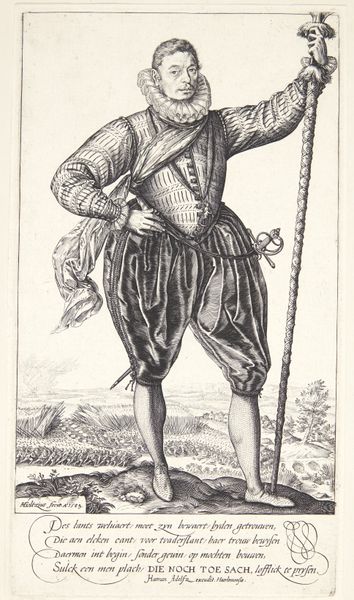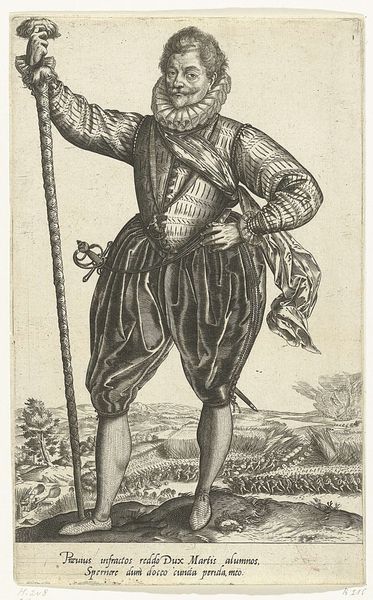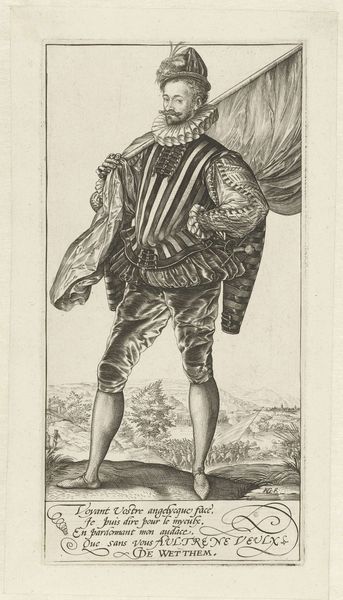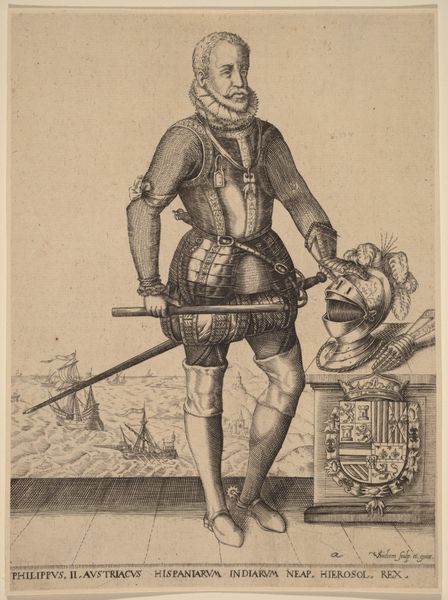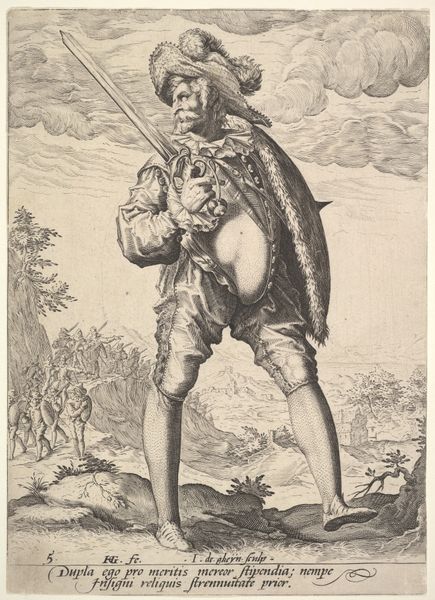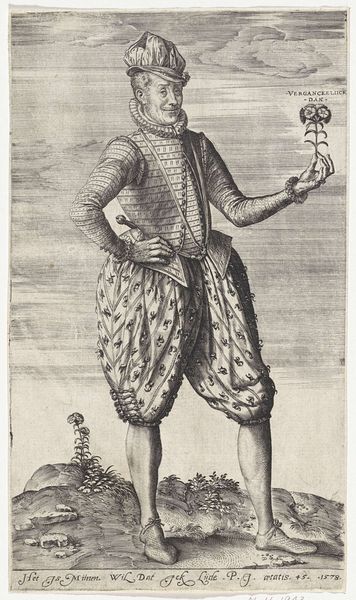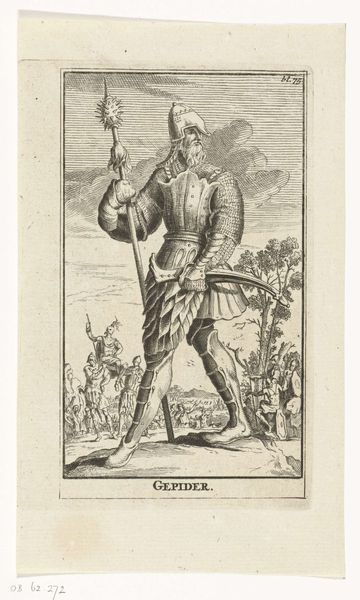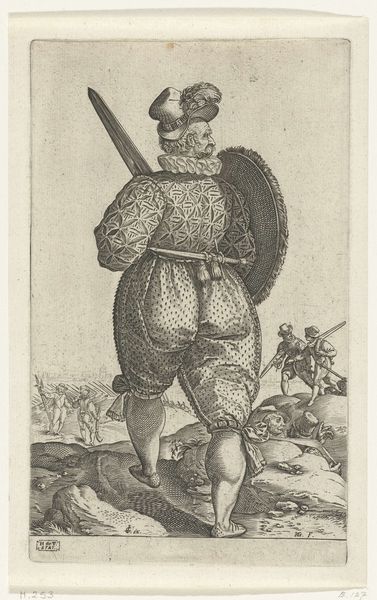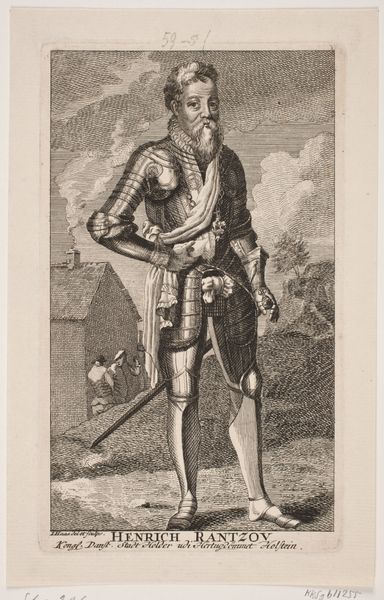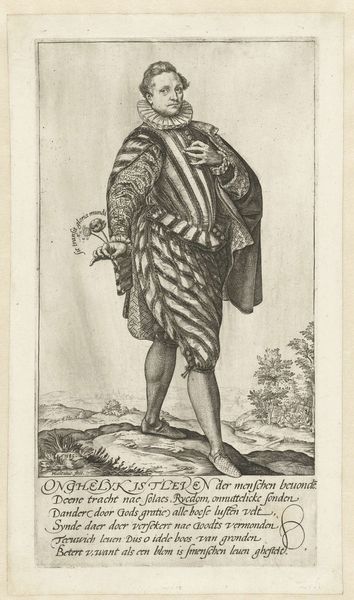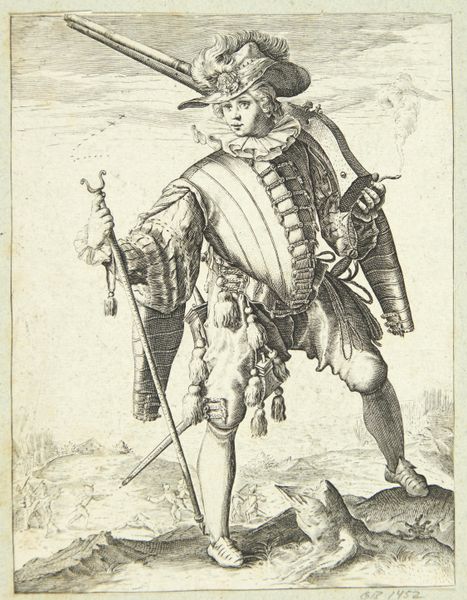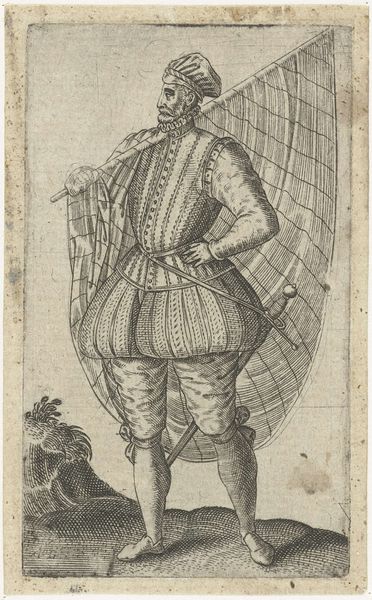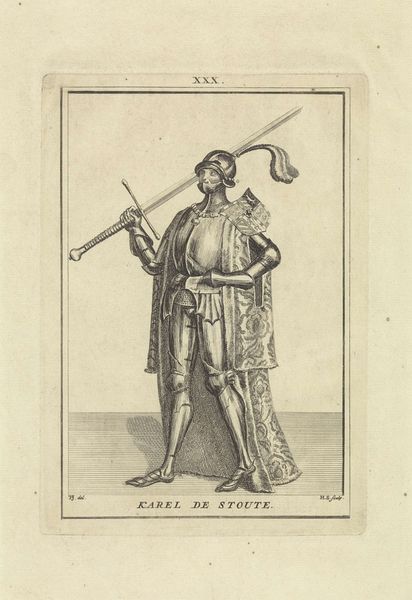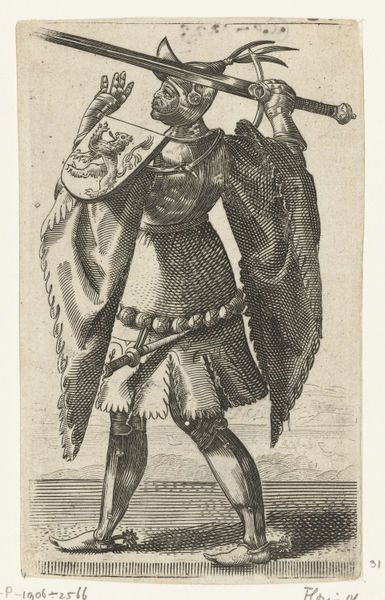
Dimensions: sheet: 27.4 x 15.3 cm (10 13/16 x 6 in.)
Copyright: National Gallery of Art: CC0 1.0
Editor: So, this is "A Pike-Man Turned to the Left," an engraving by Hendrick Goltzius from 1582. It’s quite striking! He seems proud and formidable, despite the etching style being, well, old. How do you interpret this work? Curator: This print, rendered during the early stages of the Eighty Years’ War, isn't just a portrait, but an assertion of Dutch identity and resistance. Note the pike-man’s confident stance. What do you think it communicates given the war's context? Editor: It feels like defiance? The low vantage point exaggerates his height and dominance, I suppose. But isn't this just propaganda? Curator: "Propaganda" implies manipulation. Consider it a visual argument within a climate of religious and political conflict. Goltzius subtly nods at class tensions within the Protestant Reformation and resulting Dutch Revolt. He portrays a citizen-soldier, not a nobleman. Look at his confident yet stern expression. Do you notice any indication that he expects mercy from his enemies? Editor: Not really. It's more grim determination, perhaps. The text beneath underscores the theme of mortality, I suppose. Curator: Exactly! “Today something, tomorrow nothing.” This underscores a theme prevalent during the Reformation. What power structures are being questioned here? Editor: Well, there’s certainly a message about temporal power versus individual fate. The print bypasses the aristocracy, speaking directly to… well, *us*. And probably to wealthy Dutch merchants. It makes you feel complicit! Curator: Precisely. It speaks to our present moment, inviting viewers to reconsider power dynamics. Thank you, this has certainly illuminated some new ways to interpret the work. Editor: Yes, situating the art in its social context has given me a new appreciation for it.
Comments
No comments
Be the first to comment and join the conversation on the ultimate creative platform.
